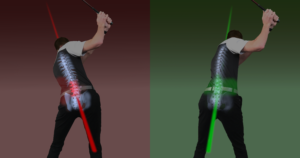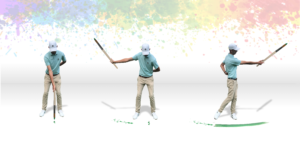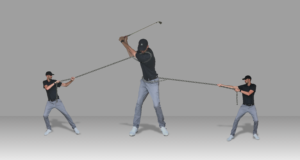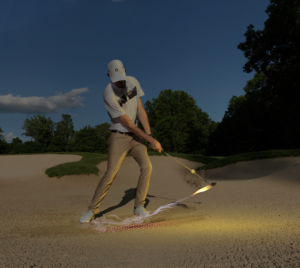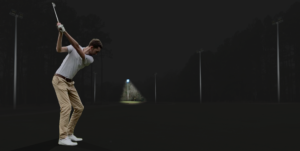Pitching and chipping around the greens is an area of the golf game many amateurs struggle with. Tension often builds up leading to a tight, narrow and quick swing motion. Here we are going to talk about how to ‘Paint The Perfect Pitch Shot’, and specifically two aspects of a short swing that will significantly improve your approach shots to the green.
Tempo
As mentioned above tension and tightness is the no. 1 killer I see in amateur golfers short game. This often comes from the demand of needing to control a number of factors such as; ball strike, distance, spin and ball flight.
These factors aren’t as demanding with the long game. When 150+ yds from the green we choose a club to produce the desired result. We can swing at 100% and essentially the main concern is accuracy. Also from further distances our level of expectation is often much lower than that of a short shot just off the green.
It’s unlikely to find a top player who has a quick/aggressive tempo when it comes to their short game. Allowing the body and club to work with a smooth rhythm can lead to greater consistency across all short shots.
Ultimately just like our longer irons, we want to establish a smooth tempo and let the club do the work for us.
Width
Creating width is such a vital part of a pitch/chip shot, especially when trying to develop consistency in ball strike. The reason being is that we are generally using a shorter club for these shots, which by default is going to narrow the swing arc.
As our swing arc gets narrower, it in turn creates a smaller area for which we need to strike the ball. Therefore we need to be much more precise with how we control the low point of our swing.
Now most elite players have excellent coordination and club head control which means they are able to execute these short shots consistently. However the average golfer doesn’t tend to have the same skill level. This lack of control can often lead to striking slightly behind or in front of the ball, leading to lack of consistency and poor results.
To widen our margin for error we want to feel the club is traveling in a wide and shallow arc. This will allow the club head to interact with the ground efficiently, and create a more solid strike on the ball.
Paint The Perfect Pitch Shot
Here is a great feeling to have which can incorporate the two aspects I mentioned above. Imagine you’re standing on a blank canvas with a paint brush as your club. The objective is to create a long consistent paint stroke, in the area the ball would be.
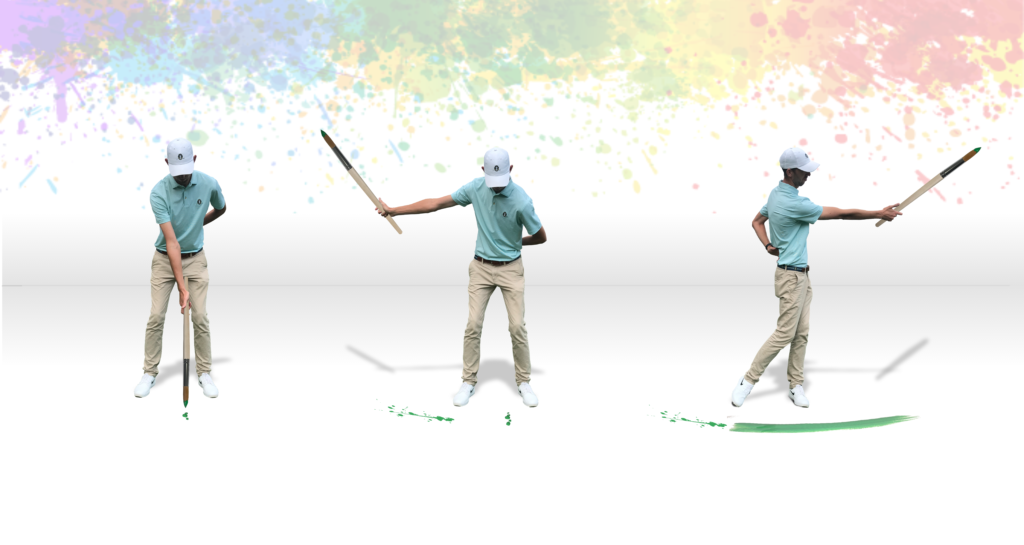
This will give a good visual aid to improve both swing width and tempo. In general paint strokes are a smooth controlled motion. We’re not decelerating, but rather producing a nice rhythmic flow on the swing. We don’t want to be flicking paint everywhere.
Also visualizing a long, light brush stroke will help produce that wide, shallow angle of attack we are looking for. This feeling will prevent the club from digging into the ground, and as long as we’re ‘painting’ the club will slide under the ball.
Summary
Give this exercise a try if you’re struggling with with your short shots to the green. Improving tempo and width are certainly two factors that can help better your short game. And remember Paint The Perfect Pitch Shot.

